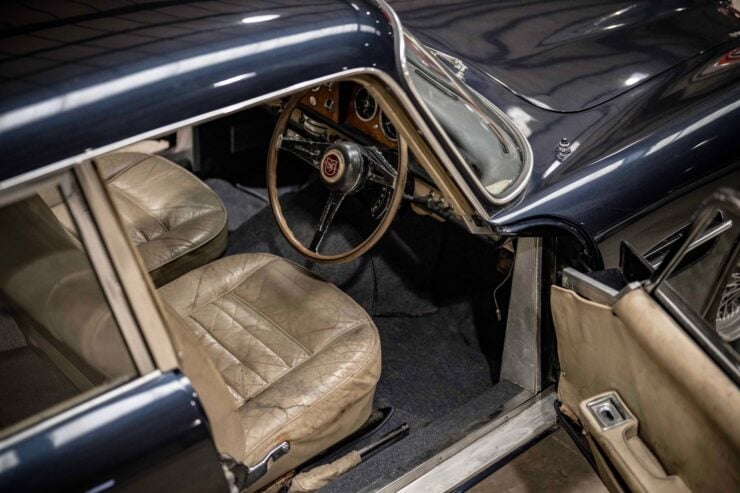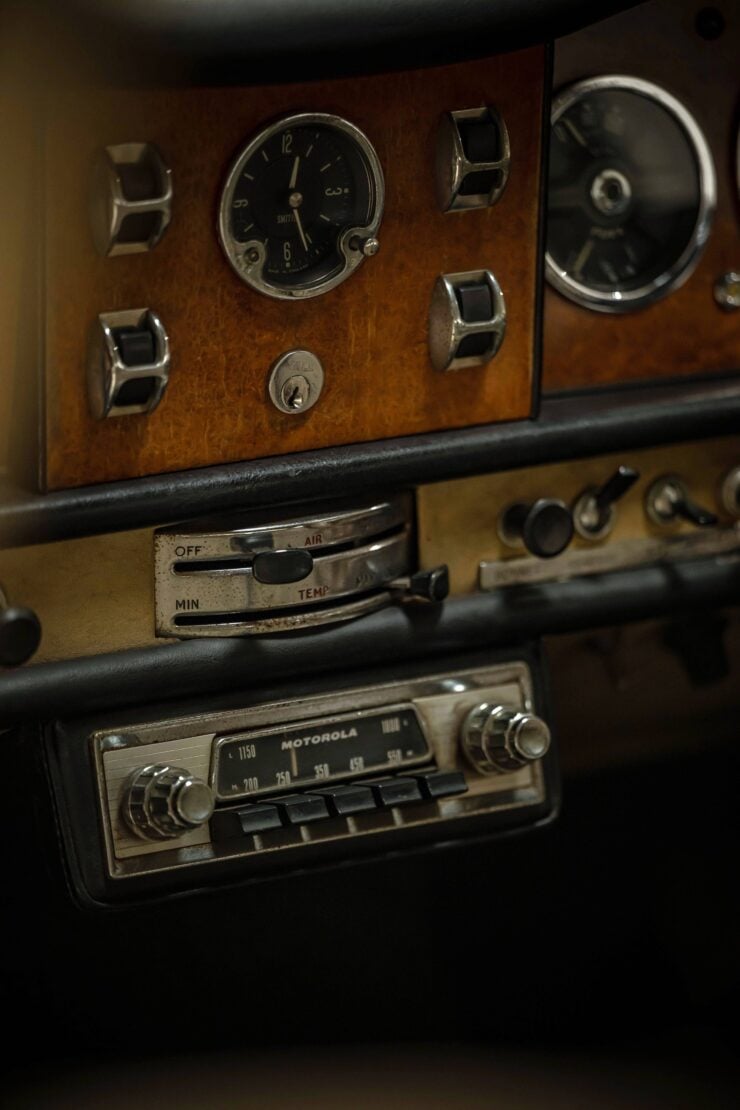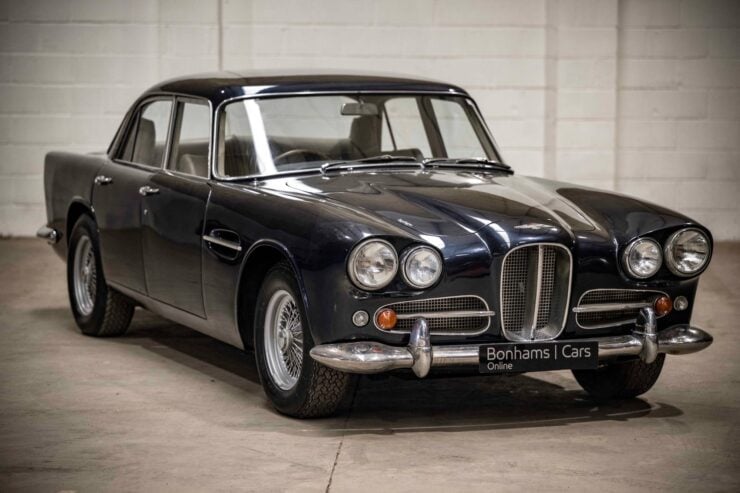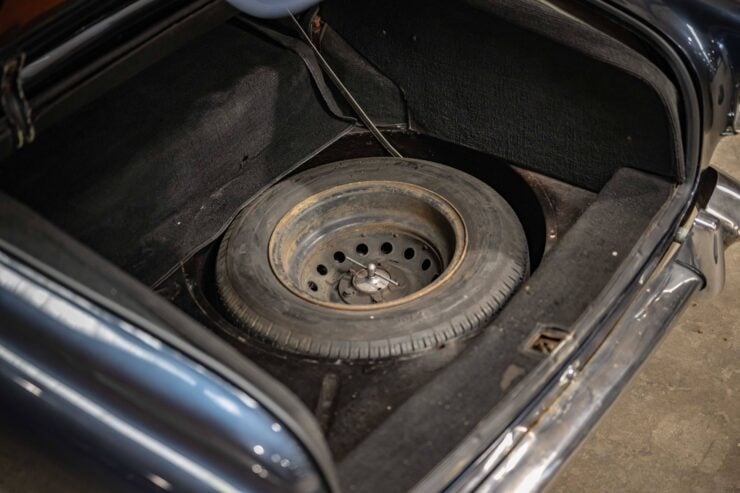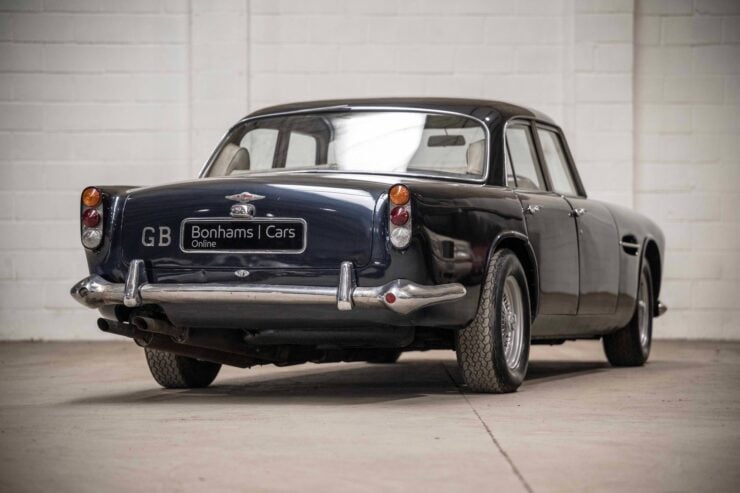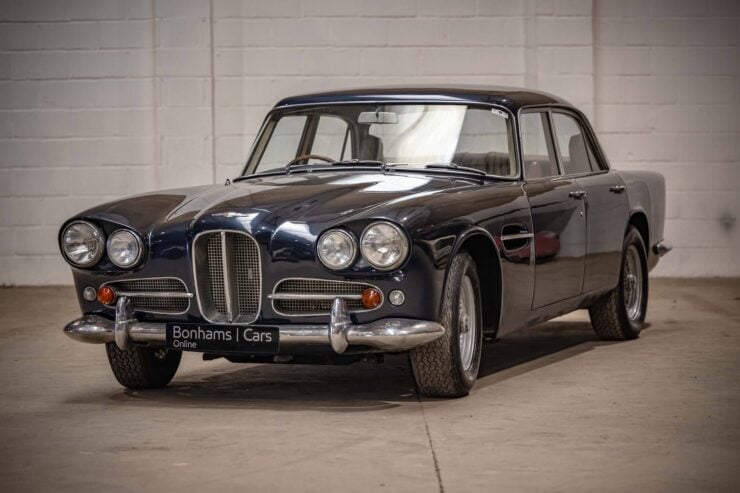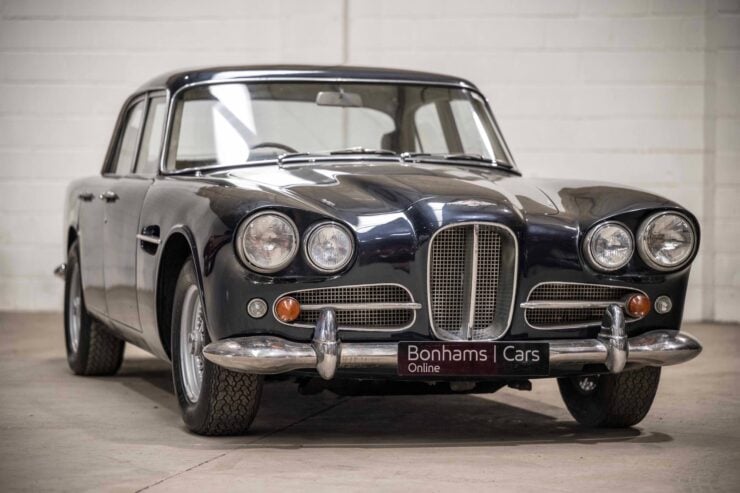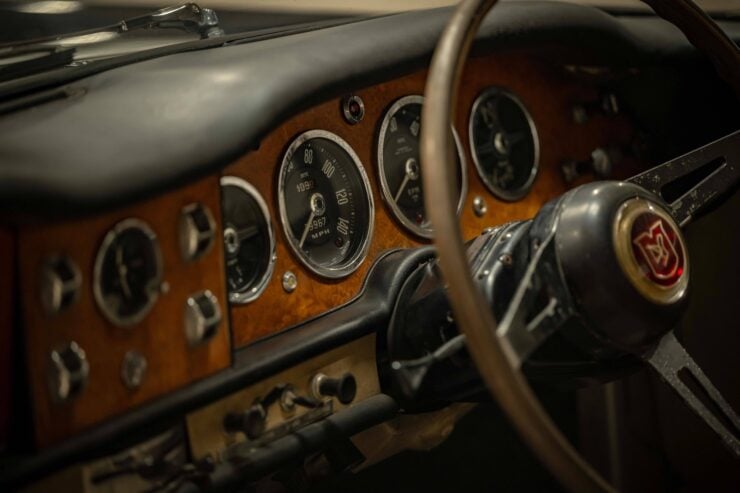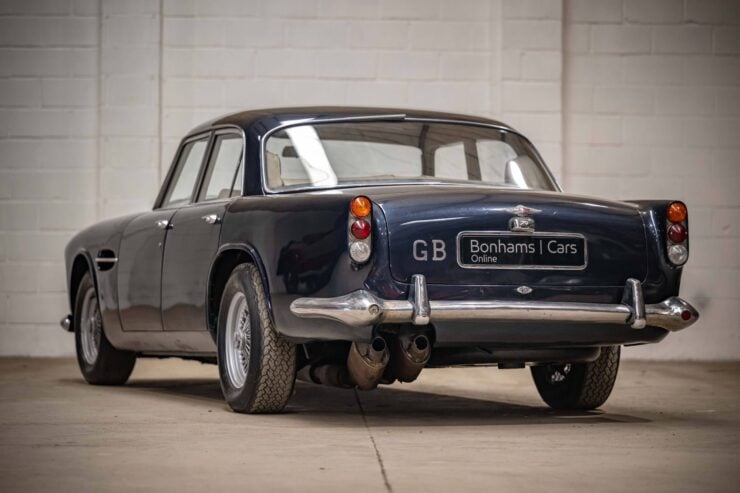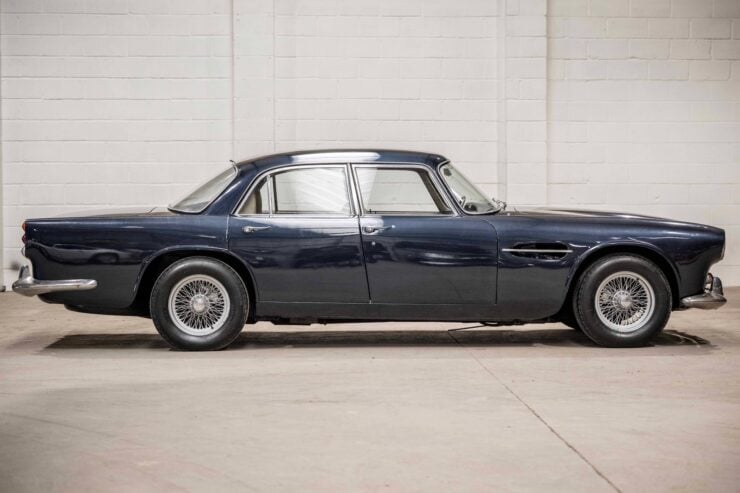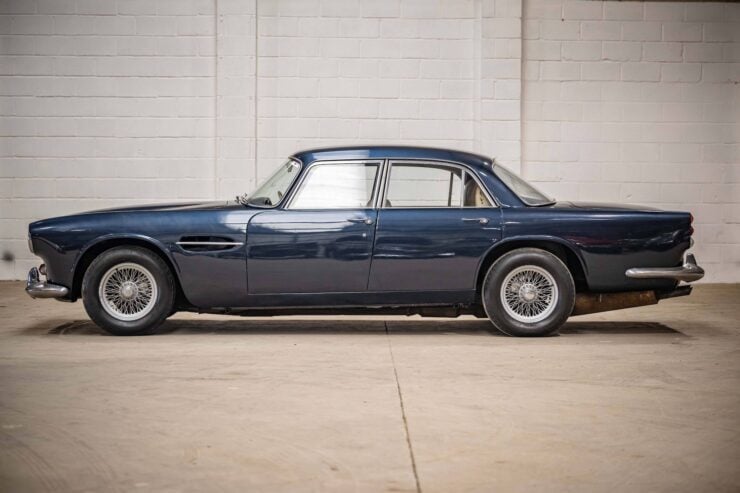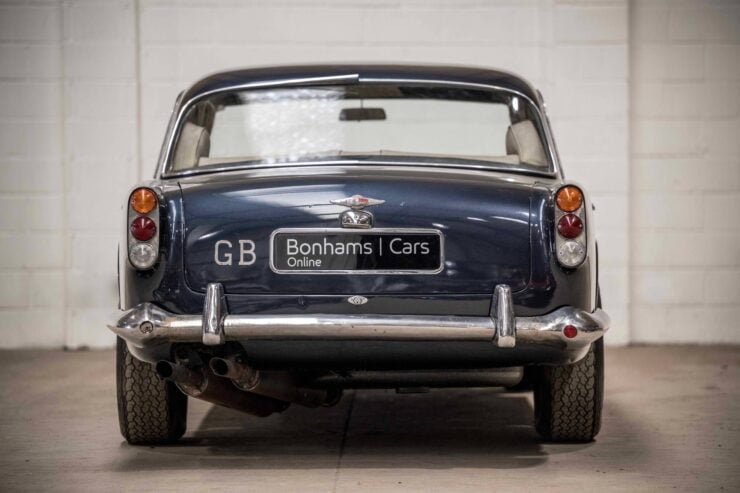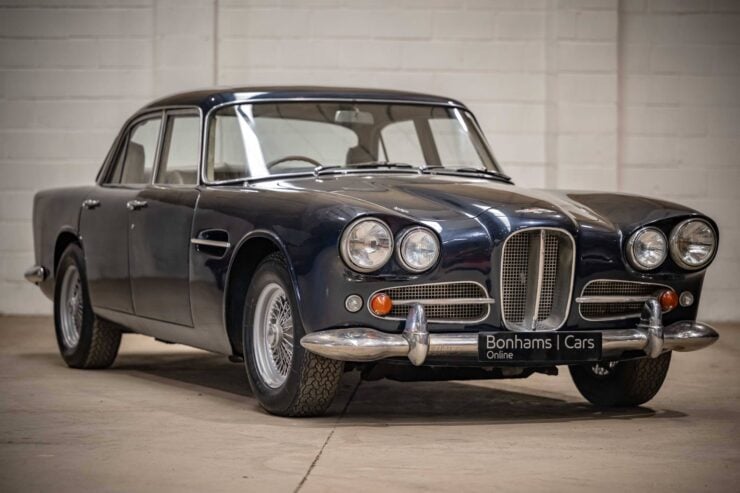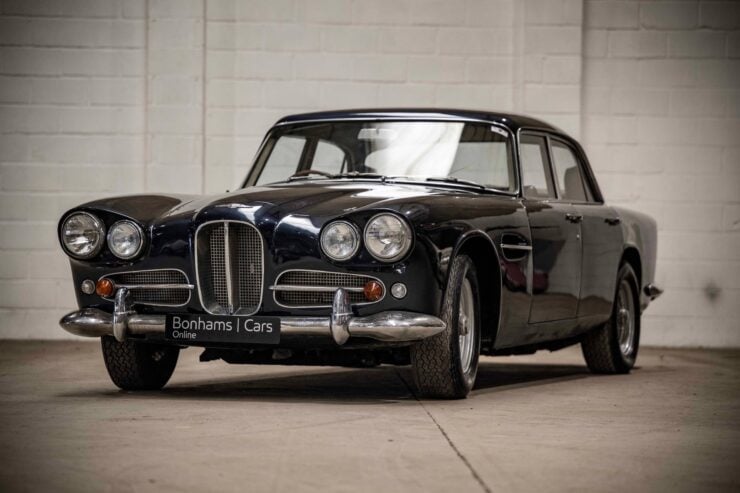This is one of just 55 examples of the Aston Martin Lagonda Rapide Sports Saloon that were made, and one of only 47 thought to have survived to the modern day.
The Lagonda Rapide Sports Saloon was ultimately an ill-fated project launched by Aston Martin’s David Brown as a high-performance competitor to the likes of Rolls-Royce and Bentley – offering more speed and better handling for the gentleman owner who liked to drive his own automobile.
Fast Facts: The Aston Martin Lagonda Rapide
- The Aston Martin Lagonda Rapide was introduced in 1961 as a high-performance four-door luxury saloon designed to rival Bentley and Rolls-Royce offerings. Just 55 were hand-built at Newport Pagnell through 1964, with only 47 thought to survive today. It was based heavily on DB4 mechanicals and Touring’s “Superleggera” bodywork architecture.
- Developed under David Brown’s leadership, the Rapide represented a revival of the Lagonda name, which Aston Martin had acquired in 1947 primarily for its engineering assets. The goal was to offer a grand saloon that combined sporting capability with luxury, targeting gentleman drivers who preferred to drive themselves – rather than be chauffeured.
- Powered by a 4.0 liter Tadek Marek-designed inline-six, the Rapide produced 236 bhp and offered a top speed of approximately 130 mph. It was built on a lengthened DB4 chassis, with de Dion rear suspension, four-wheel disc brakes, and a Borg-Warner automatic transmission as standard, though a few manual versions were built.
- Despite its advanced engineering and high-levels of craftsmanship, the Rapide struggled to find buyers due to its high cost and niche positioning. Nevertheless, it set a precedent for future Aston Martin saloons and is now a rare collectible. The example shown here was originally delivered to the London Rubber Company (better known today as Durex) and it’s being auctioned by Bonhams.
The Aston Martin Lagonda Rapide
The Aston Martin Lagonda Rapide was introduced in 1961 as a revival of the Lagonda brand name, which had been under Aston Martin ownership since 1947 courtesy of David Brown. It was an attempt by Aston Martin to establish a presence in the British high-performance luxury saloon market dominated by Rolls-Royce, Bentley, and Jaguar – counterbalancing their sports car image with a model aimed at well-heeled customers seeking speed with some additional space.
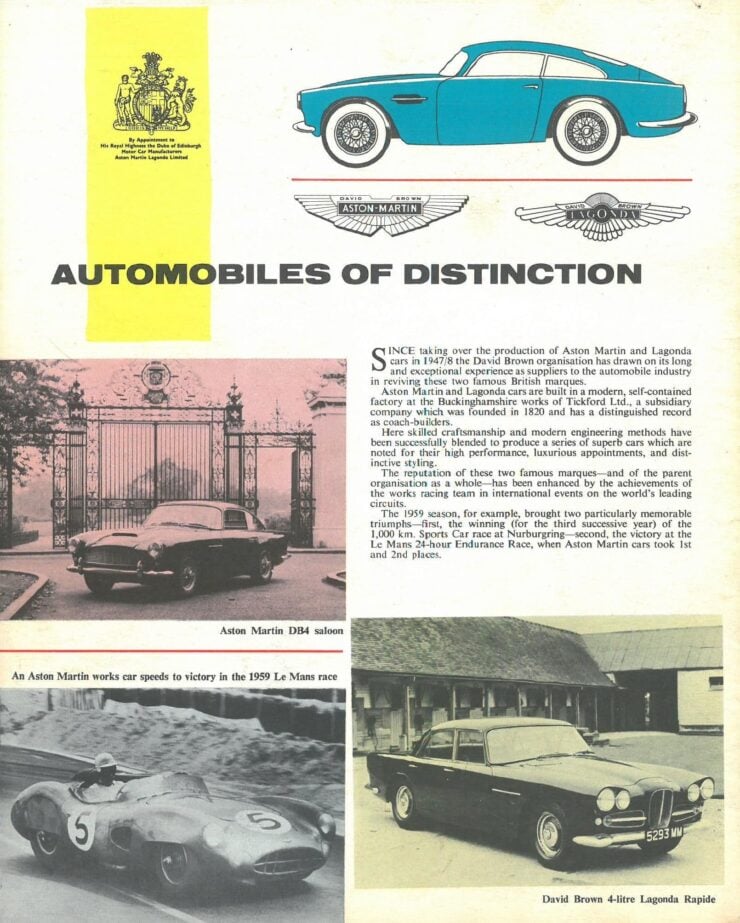

Designed during David Brown’s ownership of the company, the Rapide was intended to carry the prestige of Lagonda into the 1960s while retaining Aston Martin’s Le Mans-winning performance ethos.
The Lagonda name itself still carried considerable weight in the early 1960s. Originally founded in 1906, the marque had enjoyed periods of success before falling into financial trouble post-WWII. Brown’s acquisition of Lagonda in 1947 was partly driven by a desire to secure the rights and tooling to W.O. Bentley’s advanced engine designs, as he planned to use them in a series of new sports and GT cars.
While Lagonda had continued to produce cars into the 1950s, the brand went dormant by the end of the decade. By the late 1950s, Aston Martin had grown its profile through racing success and the DB-series of cars – capped off by winning the 1959 24 Hours of Le Mans.
There was recognition within the company that a saloon would be necessary to expand the product lineup and target a different segment of the market.
Development of the Lagonda Rapide began in the late 1950s. The body was designed by Carrozzeria Touring of Milan, whose “Superleggera” (super light) body construction method was already used on Aston Martin’s DB4. This method involved shaping thin aluminum panels over a light tubular steel frame, resulting in a lightweight alloy body that was still strong enough for regular production car use.
Despite being a four-door saloon, the Rapide kept much of the DB4’s character in its design – with a long hood, short rear deck, and proportions that leaned heavily toward the GT tradition rather than conventional saloon design of the era. A key distinguishing feature was the split front grille, a subtle reference to earlier Lagondas, giving the car a distinct visual identity contrasting with Aston Martin – albeit an identity that would be somewhat short-lived.
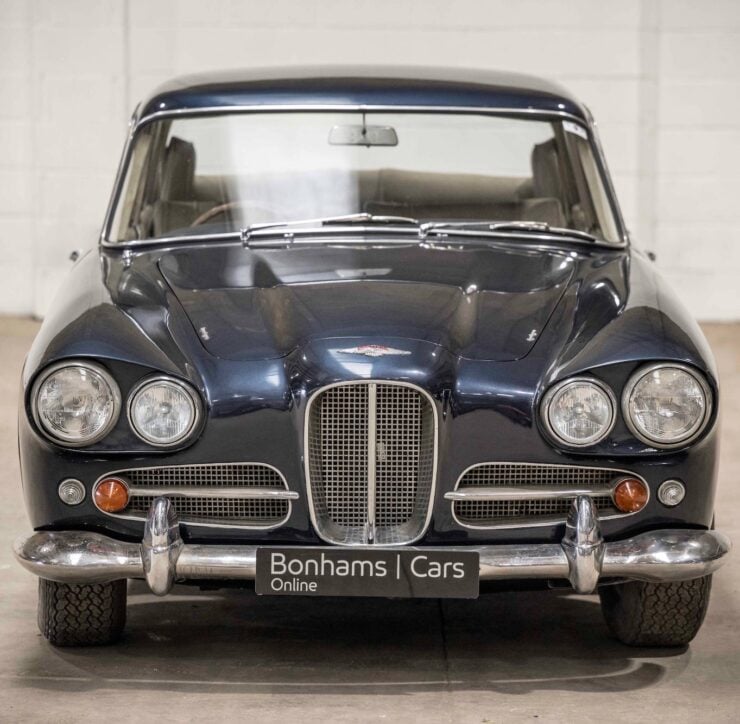


Underneath, the Rapide shared many components with the DB4, most significantly the Tadek Marek-designed straight-six which had its displacement increased from 3.7 liters to 4.0 liters. This was an all-alloy, twin-cam inline-six producing approximately 236 bhp. Power was routed to the rear wheels via a 3-speed automatic Borg-Warner gearbox as standard, though a manual option existed (in very limited numbers).
This drivetrain allowed the car to reach a top speed of approximately 130 mph, with acceleration that was strong for a saloon of its weight – roughly 1,715 kgs (3,781 lbs) – depending on specification, of course.
The chassis was also borrowed from the DB4, though it was lengthened to accommodate the saloon body and rear doors and seats. The front suspension was fully independent using coil springs, while the rear employed a de Dion tube arrangement intended to balance ride comfort and rear passenger space with good handling. Braking was handled by dual circuit disc brakes on all four corners, and the car rode on wire wheels as standard.
Inside, the Lagonda Rapide was trimmed to a high level, with full Connolly leather upholstery, deep carpets, polished wood veneers, and a full set of Smiths gauges. Rear passenger space was ample for a car of its class, and while the cabin echoed Aston Martin’s sporting heritage, it was executed with a greater emphasis on comfort and luxury – particularly for rear seat passengers.
Production of the Lagonda Rapide began in 1961 and continued until 1964. Only 55 examples were built, making the Rapide one of the rarest production Aston Martins of its era – each car was hand-built at Newport Pagnell – except the original Touring-built prototype.
The low production figures were not unusual for Aston Martin during this period, but they also reflected the difficulty of positioning such a car. The Rapide was expensive, significantly more than contemporary Jaguars or even the Bentley S2, and it sat in a market niche that was small to begin with. Customers who wanted a luxury saloon often looked to Rolls-Royce or Bentley, those who wanted performance typically leaned toward coupes and GTs.
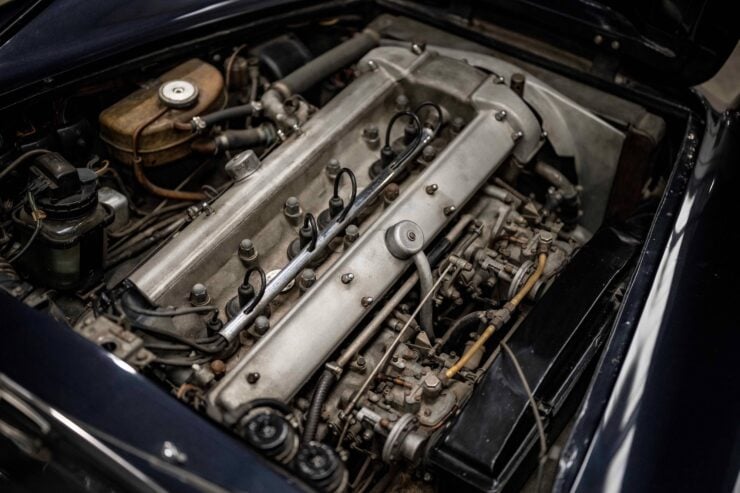


The Rapide did, however, establish a precedent – it foreshadowed Aston Martin’s future efforts to develop larger, more luxurious models under the Lagonda name. The idea of a high-performance four-door from a company known primarily for sports cars would return again in the 1970s, culminating in the William Towns-designed Lagonda of 1976 — a car with a vastly different character and reception.
Today, the 1960s Lagonda Rapide occupies a quiet but significant place in Aston Martin’s history. It was the company’s first post-war four-door, a bridge between the DB-series GTs and later saloons, and a product of its time, when the boundaries between sports cars and luxury cars were more fluid than they are now.
With its Touring design and DB4-derived mechanicals it has become increasingly sought after among collectors, particularly those with an interest in Aston Martin’s transitional models and coachbuilt rarities.
The Aston Martin Lagonda Rapide Shown Here
The car you see here is believed to be the 14th Aston Martin Lagonda Rapide that was built, of the 55 cars in total. It’s been part of a private collection for many years on static display, and as such it will need recommissioning before any driving is undertaken.
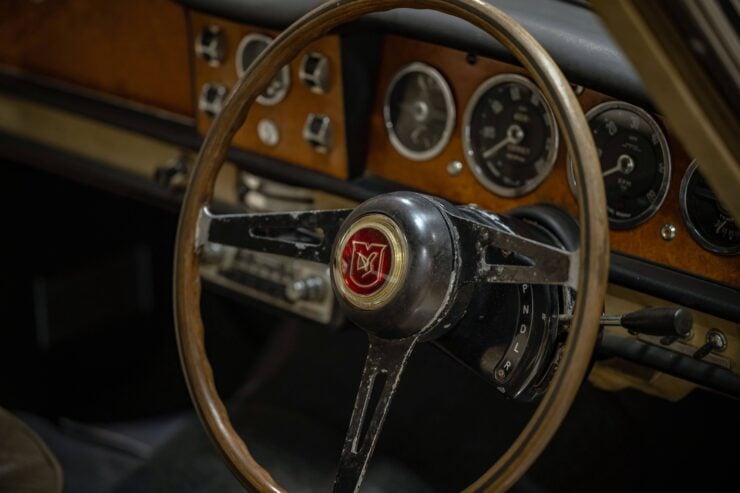


Interestingly, this car was delivered new to The London Rubber Company, a company perhaps better known by the name of its most famous brand – Durex. Exactly what they used the car for is not recorded, though most likely it was assigned to executive transportation.
It’s now being offered for sale by Bonhams out of the United Kingdom with 59,956 miles on the odometer. If you’d like to read more about it or register to bid you can visit the listing here.
Images courtesy of Bonhams



